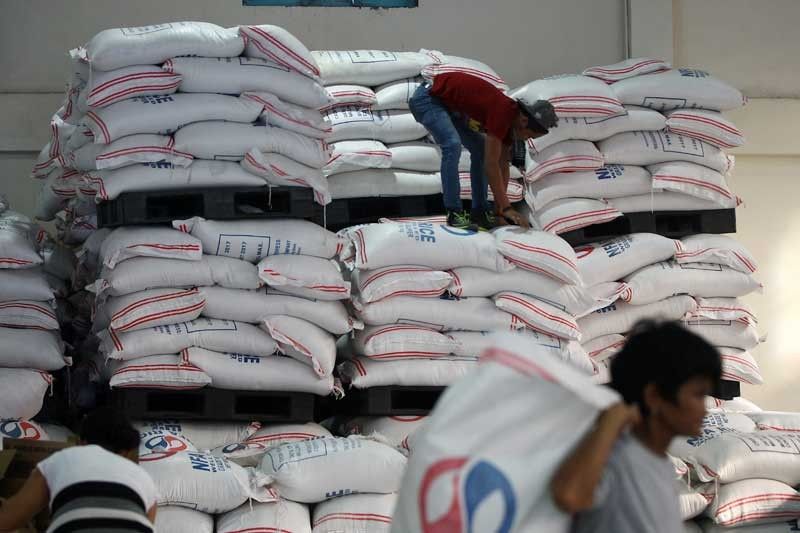Rice imports seen to exceed 1.5 million metric tons in 2019

MANILA, Philippines — The Philippines is expected to import more rice next year as local production will still not be able to cover the national demand for the country’s staple and as preparation for the 2019 midterm elections, the United States Department of Agriculture (USDA) said.
In the latest report of the USDA Foreign Agricultural Service (FAS), it said the Philippines will likely import 1.5 million metric tons (MT) of rice in 2019, 15 percent higher than this year’s estimated 1.3 million MT.
The USDA hiked next year’s rice imports from the earlier projection of 1.2 million MT following reduced crop estimates.
“High rice prices due to tight supplies, rising fuel prices, and market distribution inefficiencies will force the Philippine government to import more rice to stabilize prices and contain inflation, which is at a nine-year high,” USDA said.
“Increasing rice prices are forcing the Philippine government to import more to augment supply and stabilize prices next year,” it added.
USDA said the country’s additional imports also aim to strengthen buffer stocks ahead of the midterm elections scheduled in May 2019.
Agriculture Secretary Emmanuel Piñol already said more rice imports is seen as the immediate solution to stabilize and eventually bring down prices of rice.
“I have been given the green light by the President. We have to make sure people in areas, especially those affected by the typhoon, will not run out of rice,” Piñol said.
He added that he is set to ask the interagency NFA Council to allow an immediate importation of a sizable volume to ensure stable supply in time for the holiday season.
“Plus, it will be election year next year, candidates usually give out rice which means that they will buy more from the NFA. These are the realities that we have to address,” Piñol said.
“The President said do whatever it takes to ensure that there would be sufficient supply and I will do it,” he added.
Furthermore, the DA plans to put a stop on the private importation of first class or fancy rice as this further pushes up prices of other commercial rice in the market.
Piñol said private importers will no longer be allowed to import fancy rice and should instead bring in the kind of rice that NFA sources outside the country.
“Imported rice is not bringing down the prices of rice. In fact, imported rice which is basically fancy rice like Jasmine and Long Grains, is setting the high level of prices. Allowing the private sector to import first class or fancy rice does not and will not bring down the prices of commercial rice in the market,” he said.
The NFA imported rice classified as 25 percent brokens is aimed at stabilizing market prices by selling at P27 to P32 per kilogram while private imported rice is at five percent brokens which is much priced higher.
Meanwhile, production this year has been revised downwards to 19.4 million MT of paddy rice following lower output during the second and third quarter.
Production in the second quarter of 2018 declined 1.4 percent output during the July to September 2018 period will again likely decline two percent as area harvested and yields are estimated to drop by 2.8 percent and 0.9 percent, respectively.
Rice consumption is also slightly raised by 50,000 MT to account for spoilage due to a series of recent tropical weather disturbances that resulted in excessive rainfall and flooding.
In addition, rising food prices are forcing less affluent Filipinos to consume more rice and less meat and vegetables.
USDA’s forecast is still subject to changes especially as the government has yet to finalize matters of the quantitative restrictions on imported rice.
Production of milled-rice next year is only seen increasing by one percent to 12.35 million MT from the expected 12.23 million MT this year.
USDA said there may be slight improvements in area planted as rice areas in 2019 will be at 4.85 million hectares, less than one percent higher than the 4.84 million hectares this year.
In terms of ending stocks, USDA said the Philippines will likely end 2018 with a carry-over volume of 2.78 million MT for 2019.
- Latest
- Trending



























